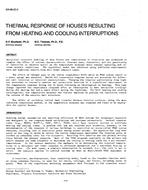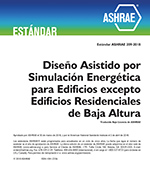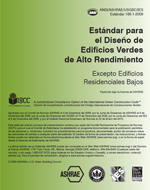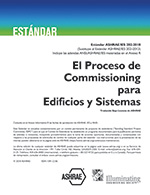Description
Analytical transient modeling of heat fluxes and temperatures in structures was conducted to examine the effect of various characteristics (thermal mass, insulation, and the positioning of insulation in exterior walls) on the temperature response under unusual operating and extreme weather conditions. The analytical model was validated using published experimental data and numerical results from well known computer codes.
The effect of thermal mass on the inside temperature drift after an HVAC system cutoff or a power outage was examined. Inside air temperature response curves are presented for different wall (exterior or interior) constructions. Changing the interior partitioning from light and insulated to thermally massive and uninsulated resulted in a significant improvement in the temperature response during the 24 hours following an interruption in heating. This same change improved the temperature response after an interruption in heat extraction (cooling) during the daytime but had a small effect during the nighttime. For both heating and cooling interruptions, the temperature response was further improved by placing the insulation toward the outside of the exterior wall structure.
The effect of including radiant heat transfer between interior surfaces, using the mean radiative temperature method, on the temperature response was examined and found to be negligible for typical houses.
Units: Dual
Citation: Symposium, ASHRAE Transactions, 1988, vol. 94, pt. 1, Dallas, TX
Product Details
- Published:
- 1988
- Number of Pages:
- 15
- File Size:
- 1 file , 1.1 MB
- Product Code(s):
- D-DA-88-23-2




